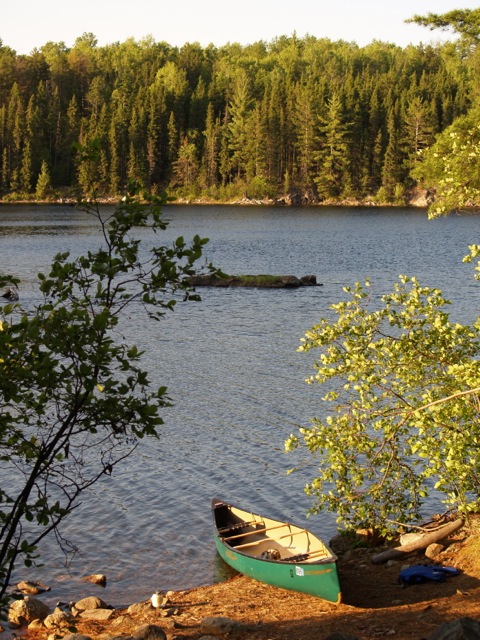By Julie Lusk
Many group leaders are aware of the benefits of guided meditations but have had little experience in the field. Here are some tips to help you use guided meditations effectively.
Working with guided meditations
Everyone is different, so each person will experience guided imagery uniquely. These individual differences should be encouraged. During a guided meditation, some people will imagine vivid scenes, colors, images, or sounds while others will focus on what they are feeling, or experience it as a concept. This is why a combination of sights, sounds, and feelings are often incorporated into meditations. With practice, it is possible to expand your participants’ range of awareness.
By careful selection of images you can help deepen their experience and cultivate their awareness in new areas that can enrich their lives. For instance, a person who is most comfortable in the visual area can be encouraged to stretch his or her awareness and increase his or her sensitivity to feelings and sounds.
Working with guided imagery is powerful and it is up to you to use it responsibly and ethically. Leaders with little or no training in guided imagery can use these scripts with emotionally healthy people. Be careful, however, when presenting themes and techniques that are unfamiliar to you. Since people respond in a variety of ways to visualization, avoid generalizing about the benefits of any given script.
If your groups are composed of people who are emotionally ill or especially fragile, you should seek out special training or professional guidance before introducing them to visualizations.
Preparing the group or individual
Physical relaxation reduces anxiety, activates the mind-body connection, and enhances the ability to focus on mental images. Some type of physical relaxation sequence should be used prior to every guided meditation.
Breathing properly is essential for complete and total relaxation. Unfortunately, very few people take full breaths, especially when under stress. When a person consciously uses deep breathing correctly, stress is reduced and the mind can remain calm and stable. It is important that people focus on their breathing, with full deep breaths through the nose.
Before beginning any guided meditation, briefly describe the images you will use and ask if they make anyone feel uncomfortable. People who are afraid of water may find images of ocean waves to be frightening rather than calming. Be prepared with an alternate image. Let participants know that if they become uncomfortable, they may, at any time, open their eyes and tune out or change the visualization.
As you read a script, people will follow you for a while and then drift off into their own imaginations. They will usually tune you back in later on. If they know this in advance, they won’t feel as if they are failing by being inattentive. So tell them this is normal and notice when it happens.
Choosing the right atmosphere
Select a room that has comfortable chairs for sitting or a carpeted floor for lying down. Close the door and shut the windows to block out distracting noise. If possible, dim the lights to create a relaxing environment. Low lights enhance the ability to relax by blocking out visual distractions. If the room lights cannot be controlled to your satisfaction, bring along a lamp or night lights. Adjust the thermostat so that the room temperature is warm and comfortable. If the room is too cool, it will be hard to relax and remain focused. Suggest that people wear a sweater or jacket if they think they may get cold.
If distractions occur—a noisy air conditioner, traffic, loud conversations—try raising your voice, using shorter phrases and fewer pauses, or incorporating the sounds into the guided meditation. For example, you might say, “Notice how the humming sounds of the air conditioner relax you more and more.” Or, “If your mind begins to drift, gently bring it back to the sound of my voice.”
Using your voice
Speak in a calm comforting, and steady manner. Let your voice flow. Your voice should be smooth and somewhat monotonous. But don’t whisper. Start with your voice at a volume that can be easily heard. As the guided meditation progresses and as the participants’ awareness increases, you may begin speaking more softly. As a person relaxes, hearing acuity can increase. Bring your voice up when suggesting tension and bring it down when suggesting relaxation. Near the end of the guided meditation, return to using an easily heard volume. This will help participants come back feeling alert and refreshed.
You may tell participants to use a hand signal if they cannot hear you. Advise people with hearing impairments to sit close to you or you can move closer to them.
If you are having difficulty reading the meditation scripts effectively, there are many pre-recorded scripts available. Click here to see Whole Person’s cd’s. The Daydreams, Wilderness Daydreams and Mini-Meditations are particularly useful.
Pacing yourself
Read the guided meditations slowly, but not so slowly that you lose people. Begin at a conversational pace and slow down as the relaxation progresses. It’s easy to go too fast, so take your time. Don’t rush.
The ellipses (…) used in my books indicate a brief pause. Many other authors use this technique. Spaces between paragraphs suggest often suggest a longer pause.
Be sure to understand the format used by the author. For example, in 30 Scripts the reader’s notes and script divisions are printed in italics and should not be read out loud.
Give participants time to follow your instructions. If you suggest that they wiggle their toes, watch them do so, then wait for them to stop wiggling their toes before going on. When participants are relaxed and engaged in the imagery process, they have tapped into their subconscious (slow, rich, imagery) mind – and they shouldn’t be hurried.
When you’re leading the meditation, stay in your conscious (alert and efficient) mind. Pay careful attention to all participants. You may have to repeat an instruction if you see that people are not following you.
To help you with your volume and tone, pace and timing, listen to a recording of yourself leading guided meditations.
As you reach the end of a meditation, always help participants make the transition back to the present. Tell them to visualize their surroundings, to stretch, and to breathe deeply. Repeat these instructions until everyone is alert.
Using music
Using music to enhance relaxation is not a new idea. History is full of examples of medicine men and women, philosophers, priests, scientists, and musicians who used music to heal. In fact, music seems to be an avenue of communication for some people where no other avenues appear to exist.
Your music should be cued up and ready to go at the right volume before you start your meditation. Nothing ruins the atmosphere more quickly than the leader having to fool around trying to get the music going.
Click here for Julie Lusk’s bio.
Click here to go to Julie’s website.
Click here for see all of Whole Person Associates’ guided meditation resources.




